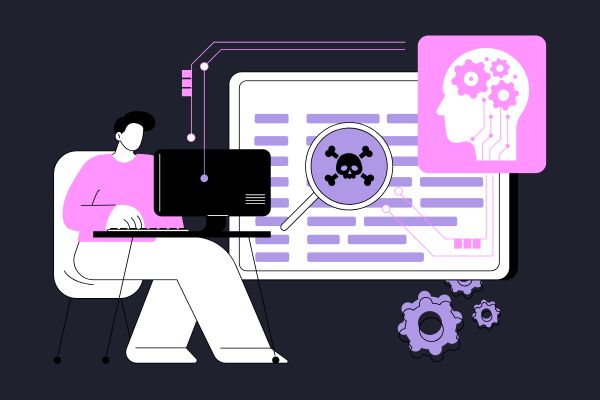Last Updated on March 26, 2025 by Becky Halls
Backlinks are crucial for SEO, but not all backlinks are beneficial. In fact, some links can harm your website’s ranking and credibility. To keep your website healthy, it’s essential to remove bad backlinks that negatively impact your SEO. In this guide, we’ll explain how to identify and remove harmful backlinks and show you why a clean backlink profile is vital for your website’s success.
What Are Bad Backlinks?
Bad backlinks are links pointing to your website from low-quality, spammy, or irrelevant sites. These types of backlinks can harm your website’s SEO, making it harder for your pages to rank on search engines. Google and other search engines prioritize trustworthy sites, and if your site is associated with spammy or low-authority links, it could get penalized. That’s why it’s important to remove bad backlinks regularly.
Common Backlink Myths
Many website owners believe that all backlinks are beneficial for SEO. However, links from irrelevant or low-quality sites can actually harm your rankings.
Another common myth is that a high number of backlinks guarantees better search results. Quality matters more than quantity, and poor links may attract penalties.
It’s also often misunderstood that disavowing bad links can negatively impact legitimate backlinks—this is not the case when done correctly. Clarifying these myths helps in crafting an effective SEO strategy by focusing on quality building practices.

Why Removing Bad Backlinks Matters
The process of removing bad backlinks is essential for keeping your backlink profile clean and boosting your SEO performance. Here’s why it matters:
- Improved Rankings: Search engines like Google evaluate the quality of your backlinks. Having a lot of bad backlinks can lead to lower rankings and even penalties.
- Increased Website Credibility: A clean backlink profile signals that your site is authoritative and trustworthy, which improves your credibility in the eyes of both users and search engines.
- Better User Experience: Low-quality links can direct irrelevant or spammy traffic to your website, which could affect your site’s user experience and engagement.
How to Identify Bad Backlinks
Before you can remove bad backlinks, you need to identify which ones are harmful. Here are some characteristics of bad backlinks:
- Irrelevant Links: If a backlink comes from a site unrelated to your industry or niche, it’s likely considered irrelevant by search engines.
- Spammy or Low-Quality Sites: Links from low-authority sites, link farms, or spammy websites can harm your SEO.
- Paid Links in Schemes: If you’ve previously purchased backlinks from link-building schemes, they may be seen as manipulative by Google and lead to penalties.
- Excessive Anchor Text: Links with overly optimized or identical anchor text are often viewed as manipulative, which can be a red flag for search engines.
To identify these links, you can use tools like Google Search Console, Ahrefs, SEMrush, or Moz to analyze your backlinks and flag any that look suspicious.
Tools for Backlink Analysis
Several tools can be indispensable in analyzing backlinks. Google Search Console is a free tool offering extensive data on your site’s visibility and link profile.
Ahrefs provides insights into link quality and competitor comparisons, while SEMrush delivers comprehensive SEO reports and analytics. Moz is known for its Link Explorer tool, which evaluates link opportunities and profiles.
Each of these options provides a mix of data visualization, detailed reports, and continuous monitoring, enabling you to maintain a healthy link profile with greater precision.
Balancing these tools can help you gain a competitive edge in managing backlinks effectively.

How to Remove Bad Backlinks
Now that you know how to identify bad backlinks, here’s how to remove bad backlinks from your site and improve your SEO.
1. Request Link Removal
The first step in trying to remove bad backlinks is to contact the webmaster of the site linking to you and ask for the link to be removed. This is often the simplest and cleanest solution.
How to Do It:
- Find the contact information for the website owner.
- Send a polite request asking them to remove the link, explaining why it’s harmful.
- Provide the URL of the page where the bad backlink is located to make it easier for them to take action.
2. Use Google’s Disavow Tool
If requesting removal doesn’t work, the next step is to use Google’s Disavow Tool to tell Google to ignore certain backlinks. This is especially helpful for bad backlinks that you have no control over.
How to Disavow Bad Backlinks:
- Create a list of URLs that contain bad backlinks.
- Go to Google Search Console and upload this list via the Disavow Links Tool.
- Submit the disavow file, and Google will stop considering these links in its ranking calculations.
3. Clean Up Manually Created Bad Links
If you’ve previously engaged in sketchy link-building tactics, it’s time to clean up the mess. Identify any links you’ve built on questionable websites and either request their removal or disavow them. Regularly monitor your backlink profile to ensure new bad links don’t appear.
Best Practices for Managing Backlinks
Now that you know how to remove bad backlinks, here are some best practices to maintain a healthy backlink profile moving forward:
- Regularly Monitor Backlinks: Use tools like Google Search Console or Ahrefs to monitor your backlink profile regularly.
- Focus on Quality Links: Build backlinks from reputable, relevant sites in your industry.
- Avoid Black Hat SEO Practices: Stay clear of paid links, link farms, and other manipulative tactics that could harm your site in the long run.
Conclusion
Removing bad backlinks is essential for keeping your website’s SEO in check and ensuring your backlink profile is clean and credible. By knowing how to identify and remove bad backlinks, you can protect your site from penalties, improve your rankings, and boost your online visibility. Keep a close eye on your backlinks and don’t hesitate to take action when harmful ones show up.



